At the garden roses the stems turn black. Roses blackened after winter? You need to know what to do.
Very often, after a long winter, thermophilic roses look like lifeless. Rose has a blackened trunk, what to do in such cases. Many gardeners, seeing such a picture, rush to replace old bushes with new ones and ruthlessly dig up a sick plant. As practice shows, varietal roses are able to recover even in cases where above ground shoots practically absent. Just for this plant needs time and care.
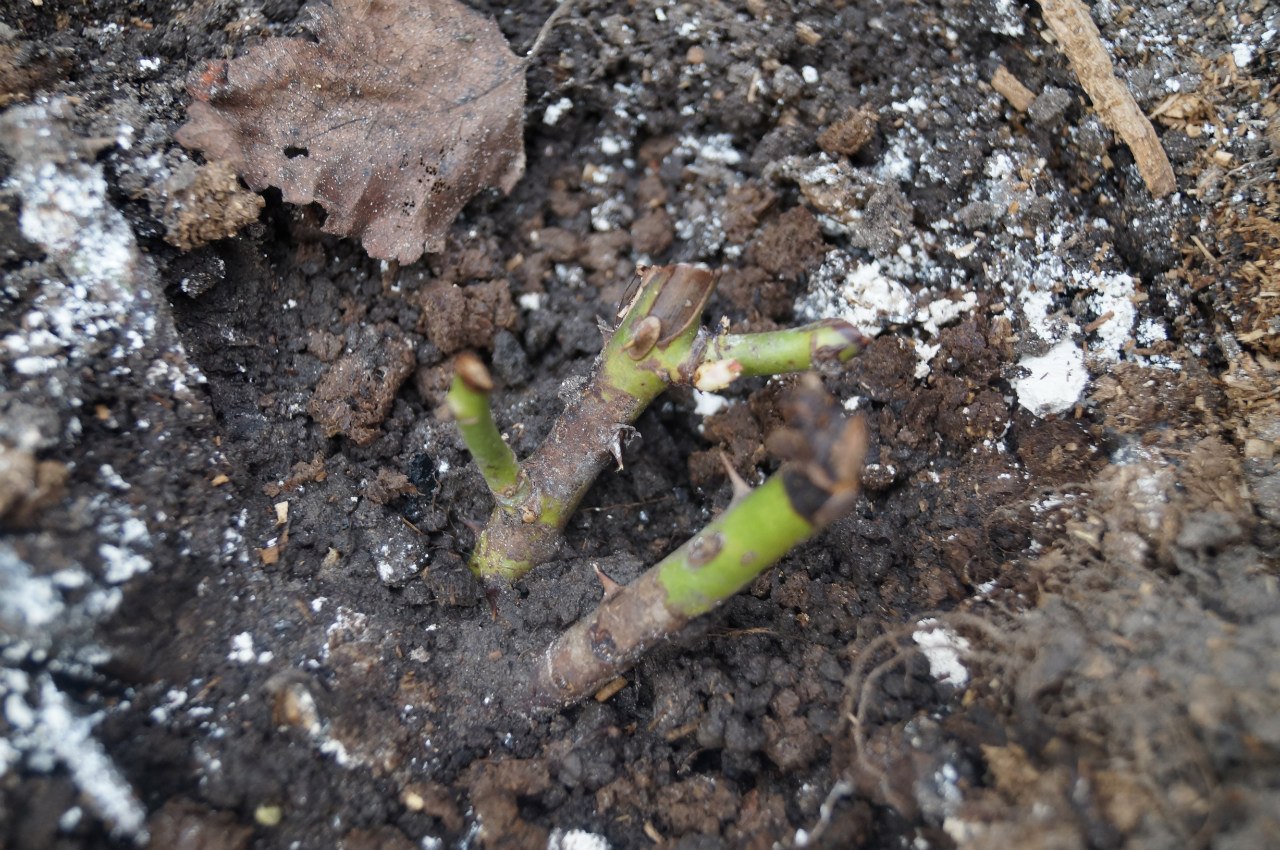 Roses blackened after winter, what to do?
Roses blackened after winter, what to do?
Blackening shoots of roses is quite common. Many varieties simply do not withstand low temperatures and freeze. But this does not mean that the bush died. What to do in order for the rose to suffer less and in the spring quickly recovered from the disease?
In order to somehow prevent this problem and help the plant survive the winter period, in the fall gardeners additionally cover rose bushes with fallen leaves and not woven breathing materials. Before shelter for the winter, all varieties except climbers are trimmed. It is enough to leave the shoots 30-40 cm in size above the ground, because flowering in next year will occur on new young trunks.
It is worth remembering that it is necessary to disclose roses in the spring on time. This is just as important as the autumn preparation. Too early opening of roses can lead to additional freezing of the shoots, and when late, young shoots can burn from high greenhouse temperatures.
What to do if after winter the rose turned black? First of all, do not hurry to throw it away. As mentioned above, the shoots of the second year of life play not the most important role in the life of the plant. It is important that the rose begins to form young shoots, which will be a sign of its recovery.
After removing shelters need to carefully inspect the bush. Perhaps there were trunks with green bark on it. If such shoots remain, then it is necessary to cut off all black tips without sparing. Completely green branches can not touch, as they will soon begin to appear young foliage.
It is worth noting that not all new shoots can be noble. Very often, varietal roses are grafted on dogrose, which resists frost well. If the ground part of the rose is completely blackened, and new shoots have appeared from the ground, it is necessary to carefully study their origin. All shoots below the graft should be removed.
 Treatment of roses in the spring from diseases and pests
Treatment of roses in the spring from diseases and pests
There is also a set of measures to prevent the spread of viral diseases. For example, the prevention of black spot in roses begins before the appearance of foliage. The complex of preventive measures includes:
- Loosening and weeding
- Correct pruning
- Collect affected foliage
- Spraying organic solution
- Processing plants antiviral drugs
If the virus is still attacked, then deciding how to treat roses from diseases, unfortunately, chemicals can no longer be done. Modern shops sell many rose treatments. When choosing, one should pay special attention to their safety for humans and animals, and also not to buy drugs in suspicious packages, from hands and from little-known manufacturers.
Facing the questions why the roses turned black after winter, what to do in order for the plant to recover quickly, first of all, you should always analyze how and in connection with which this could happen.
Competent and timely care of plants will relieve the gardener from deciding why the rose has a blackened stem, what to do if a rose garden is damaged by viral diseases.
The main question for many gardening enthusiasts is what to do if the plants turn black after winter. Rose - thermophilic flower. Gardeners seek to protect it from low temperatures under cover. But with the advent of spring, a lifeless, blackened plant is often found. Do not immediately cut the bush, because the situation can be saved.
Reason for change
If the rose is black, garden lovers chill in the cold and harsh winters. In fact, the cause of this condition is excessive care and illiterate care. For example, with the wrong organization of the winter shelter. With the arrival of heat inside this structure creates a high temperature and humidity. It is detrimental to the plant and in early spring the rose looks lifeless.
Another mistake is to expose an unprepared plant to ultraviolet light. A gardener must remember that roses are blackened after winter, as they have lost the habit of the sun. Overwintering bush should be opened gradually, first only for a few hours. It is necessary to monitor not only the temperature outside, but also the soil indicators. It should warm up on the surface and inside.
The reason for the plants to turn black after winter may be the improper organization of the wintering grounds. If there are dry, damaged stems next to healthy plants, the infection may spread. At the beginning of winter, it is advisable to prune the bushes and cut the leaves. Before the onset of cold weather, they are sprayed with a protective solution. It can be bluestone or fungicide, a substance to protect against fungal diseases.
First spring action
When the aggressive winter period ends, the rosette comes to life: the buds ripen and swell. But the fact is that the earth is still cold and the roots do not have time to wake up after the stems. It is logical that such a state threatens the plant. In this situation, there may be 2 options.
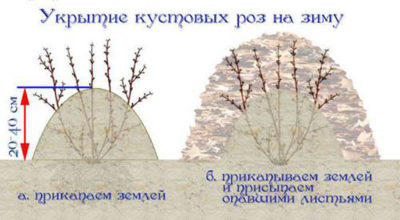
If the snow has not yet melted, the temperature often fluctuates, the bushes are still too early to wake up. The task of the gardener to give the plant a few more weeks of sleep. To do this, winter shelter sprinkle snow on top. They do this regularly, since during this period snow covers melt quickly. needs complete isolation from the cold. These bushes are recommended especially carefully cover with a thick layer of snow.
If the snow melts and forms streams of melt water - this is a call for the immediate opening of wintering. Cold water accumulated at the roots damages the plants. Therefore, snow must be regularly cleaned. Rose should prepare for the spring rays.
Opening of protective shelters
When the weather has become steadily warm, the soil has warmed up, the wintering of roses is over. Shelters need to be cleaned.
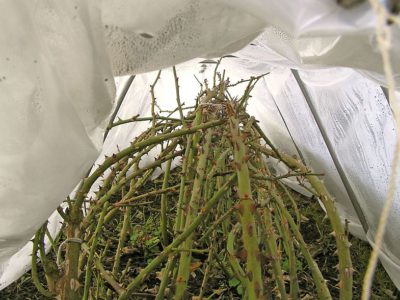
Protective shelter should be opened for a short time, it will take no more than 2 hours. Such a manipulation will protect the roses after winter from evaporation, prepare for the first rays of spring.
While the plant is ventilated, it is necessary to water and feed. For this suitable mineral complex or organic fertilizer. Such funds are used in liquid form. For a large rose garden, it is advisable to use dry fertilizer in granules. So the fertilizer process will be less time consuming.
Stems and shoots treated with a protective complex against insects and growth promoters. After a week of airing the bushes need to be cut. The cut is made oblique, leaving only healthy and strong trunks. The optimum number of buds should be no more than 6. The height of the trunk is up to 40 cm. But it is advisable not to touch miniature varieties of roses at all.
What process shoots in early spring?
To protect the rose garden from disease, be careful about choosing a fertilizer. If the compound contains nitrogen, the stems will grow stronger. This is important if the problem of blackening of the shoots often appears in the rose garden. But nitrogenous fertilizers do not affect flowering. Potassium and phosphorus support buds and flower stalks. Magnesium and iron are minerals necessary for the prevention of disease.

Stems of pink bushes are treated with liquid solutions. They may have protective, prophylactic, therapeutic effects. A popular prophylactic is copper sulphate. It is applied to healthy or partially damaged shoots. Copper oxychloride solution has the same effect.
Bushes can be sprayed with colloidal sulfur - it is a remedy against fungal diseases. Well work and decoctions of natural ingredients. Garlic decoction has bactericidal properties and fights fungi. Finely shredded garlic (2 heads) is boiled in a small saucepan of water (10 l). This broth needs to be cooled and the bushes processed by it.
Protective agents are applied to protect yourself from insects. A decoction of horse sorrel works well. The roots of this plant insist in 10 liters of water. Mixed with soapy water and applied in early spring on the shoots. But you can also use ready-made store tools.
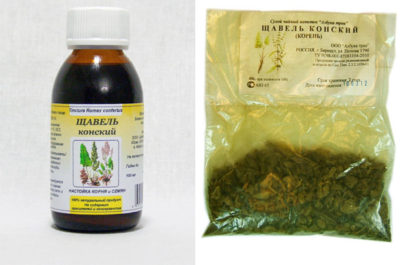
Manipulations with diseased plants
If all procedures are done correctly, the black stems are not at risk of flowers. If the diseased areas are still found, then do not be upset. A damaged rose comes to life easily with the right actions. Sometimes you have to wait until summer to enjoy the view of a flowering plant.
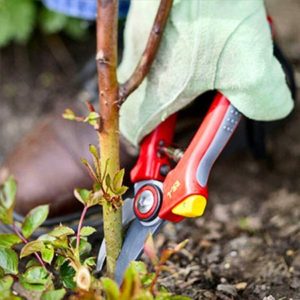
What to do if a blackened stem is found? If the disease struck the shoot partially, the damaged part should be trimmed. The infection spreads quickly, so it is important to capture a 2-3 cm of healthy plant when pruning. This will prevent the spread of affected cells. After pruning the remaining healthy shoots process green paint. So they will heal faster.
If the whole bush has blackened, it is impossible to restore the shoots. Stems need to be cut without regret at the root. Often the infection affects the ground part of the bush, and the roots remain healthy. In this case, healthy buds can mature in the vaccine. And after a while the flowers can re-germinate.
Damage may occur in places in the form of cracks and tears. Such sites can be treated. Process copper sulphate or potassium permanganate. These funds are diluted with water and applied with a brush. But this method does not always work. More effectively cut diseased stems to the ground. This will give a chance to appear healthy shoots.
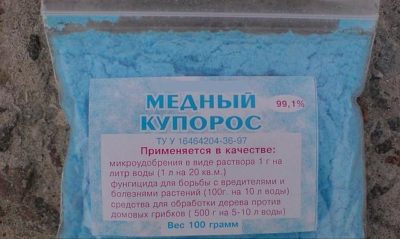
Help treated flowers
After the black stalks have been removed, the young shoots need to be helped to germinate. To do this, create optimal temperature parameters. For the initial growth period it is 18 ° C. Cropped under the root of the plants covered with a plastic container, matte inside.
It creates a kind of greenhouse. Thus, the rose is protected from aggressive sunlight. Over time, young and healthy shoots appear. As soon as they are noticed, the shelter must be removed. The first days of young roses are very vulnerable. It is necessary to clean the protective shelter in cloudy weather.
Rose can winter without damage. To do this, you need to properly organize a protective shelter, cut the stems in early winter, competently carry out the care in early spring. The reason for the blackening is not low temperature, the heat is more destructive for this plant and a sharp change in weather conditions. Therefore, do not be lazy to closely monitor the temperature of the air. Adaptation of rose bushes to the spring period takes time, but the result will definitely please.
And a little about the secrets ...
Have you ever experienced unbearable joint pain? And you know firsthand what it is:
- the inability to move easily and comfortably;
- discomfort when climbing and descending stairs;
- unpleasant crunch, clicking not at own will;
- pain during or after exercise;
- inflammation of the joints and swelling;
- unreasonable and sometimes unbearable aching pain in the joints ...
And now answer the question: does it suit you? Is it possible to endure such pain? And how much money have you already “leaked” to ineffective treatment? That's right - it's time to stop this! Do you agree? That is why we decided to publish an exclusivean interview with Professor Dikul in which he revealed the secrets of getting rid of joint pain, arthritis and arthrosis.
Heat-loving roses do not tolerate the winter cold. Long frosts, snowless periods or sudden changes in temperature can turn yesterday's queens into miserable beggars. What if the roses turned black? Definitely - save!
Roses please lush buds of caring gardeners, and negligent grieve with quick death. Resuscitation methods depend on the true causes of the disease.
Bad preparation for wintering
These fragile flowers like to winter with comfort, therefore it is desirable to wrap up 90% of modern varieties before the first serious frosts. Warming is carried out in October or November, when the buds become faded. First, they dig up the soil around the bushes, then remove the leaves from the shoots and cut off the damaged (rotted) petioles.
Gardeners who dared to leave the leaves on the stems will find the plant diseased in the spring. The leaves contain a large amount of moisture, which will continue to evaporate after wrapping. The resulting condensate will be a hotbed for the spread of disease, and during frosts it will lead to a deep frostbite of the stem.
Untimely removal of the winter shelter
Wrapped flowers are often well tolerated by cold, but they react extremely capriciously to untimely removal of heat insulation. In regions with a warm climate, gardeners tend to remove protection from roses too early - as a result, shoots that have lost the habit of ultraviolet radiation suffer from sunburn!
However, excessive care is no less harmful - you can not leave roses in the winter hill during the whole spring, otherwise the queen of the flower world will start to rot due to the spread of diaper rash.
How to save roses blackened after winter?
After opening the rose garden, gardeners may be horrified to find that the pet is blackened or a dangerous mold has formed on the plants. Do not panic ahead of time, because roses have an amazing survival rate and are capable of producing new shoots even when cut to the root!
Blackening
Faded stalks that make a lifeless impression are not necessarily dead. Many of them, after hibernation, must finally “wake up” before revealing their beauty to the world.
Remove winter hillock
It is important to quickly remove the old leaves, and then provide the roots with adequate nutrition - loosening will enrich the soil with fresh air, and fertilizers will help the roses compensate for the winter hunger strike.
Simple sanitary pruning
Carefully inspect the roses and cut off all the black or dark brown shoots. Damaged areas must be cut to the level of healthy shoots to allow flowers to grow faster.
Drastic measures
After the harsh winters, the roses can turn black until the base, then the gardener must decide on an extreme measure - cut off the dead shoots to the level of vaccination. With such pruning, the “hemp” is tried not to be left so that the flowers can “decide” for themselves how best to recover. If a root system and the inoculation is not damaged, then by the middle or the end of summer the roses can “wake up” and please with new shoots and huge buds.
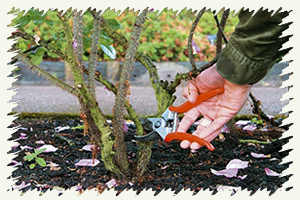 The mold is often formed at the junction of dead shoots with living tissue, therefore, with sanitary pruning, you should not spare the plant, removing it to the border with the living part of the stem, and cut about 2-3 “extra” centimeters. Otherwise, the process of decay will be impossible to stop, and the plant itself may completely die.
The mold is often formed at the junction of dead shoots with living tissue, therefore, with sanitary pruning, you should not spare the plant, removing it to the border with the living part of the stem, and cut about 2-3 “extra” centimeters. Otherwise, the process of decay will be impossible to stop, and the plant itself may completely die.
Often mold is formed on the flowers in places where water accumulated before the frost. Such areas should be carefully treated with potassium permanganate / copper sulfate, and then sealed with a medical plaster for several days. If after removing the patch the place looks damaged, it is necessary to cut off the diseased escape.
Will dry roses spring away?
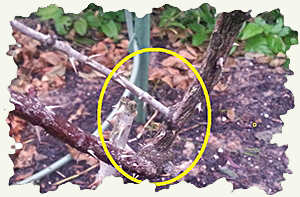 Sometimes their blackening is superficial - the flowers produce a dried out impression.
Sometimes their blackening is superficial - the flowers produce a dried out impression.
The plant seemed starved to be locked up in the sunlight, suffered from a lack of oxygen, and needed long-term rehabilitation.
This phenomenon is usually associated with violation of wintering rules, when a gardener hardly leaves the flowers to “breathe” during shelter.
What should be done to restore the roses?
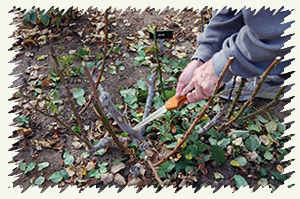 After removing the winter clothes and carrying out sanitary pruning, faded stems of roses can perfectly move away and please the whole season with luxuriant blooms.
After removing the winter clothes and carrying out sanitary pruning, faded stems of roses can perfectly move away and please the whole season with luxuriant blooms.
Hungry rosettes require frequent watering and feeding - do not spare efforts to restore their viability and fully reanimate. Most often, dry flowers are gaining lost strength in 1.5-2 months - so do not rush to cut the stems, if there is no obvious blackening or painful manifestations (mold, cracks).
Help waking up roses - what care is needed?
Rose bushes need careful care. After winter, it is important for a gardener to properly trim the shoots. Feel free to remove completely blackened stems or areas with deep cracks, mold.
The remaining operational trunks must be shortened to reasonable limits. Leave 3 to 5 whole buds on the shoot, which will give magnificent buds. The upper bud should be positioned so as to "crown" the outer part of the bush - then the "pink queens" will look lush and become a worthy decoration of the flower bed.
Moody roses love caring hands.
However, they are able to survive even the most severe winters. Do not rush to destroy the dried bush - give flowers a chance to survive! In cases where the root system has survived (after proper pruning), roses have great chances to grow in the future. If you are ready to wait, then roses can impress you!

Tell friends
Blackened the tips of the shoots of rosesWhy do the tips of the roses turn black
In the first half of summer you can see on the roses that some shoots of roses have blackened tips of the shoots. So manifested gray rot or botrytis. It affects mainly only the young parts of plants, for example, shoots only this year, as well as buds, leaves. The source of infection can be land, remnants of dry leaves, seedlings, infected seed.
Contributes to the spread of this disease, cool and wet weather, too dense planting, excess fertilizer, as well as strong soil compaction. And it is not always possible to complain about the rain. Enough accumulated dew or water from watering in the outlet outlet, on young leaves, buds, as well as lowering the temperature within a few days, sudden gusts of the north wind. One way or another, gray mold can affect not only roses, but also other ornamental plants and vegetable crops.

How to process and how to process a plant?
1. Carefully remove the affected part of the shoot (pruner or knife should be kept clean), treat the cut point with a garden cook.
2. After that, spill the soil around the bush and process the rose bush with any available fungicide: foundationol, home, topaz phytosporin-M, copper sulphate, Bordeaux mixture.
These drugs, penetrating deep into the tissues of plants, prevent further development of fungal diseases.
These drugs can be used not only with obvious signs of disease, but also for prevention.
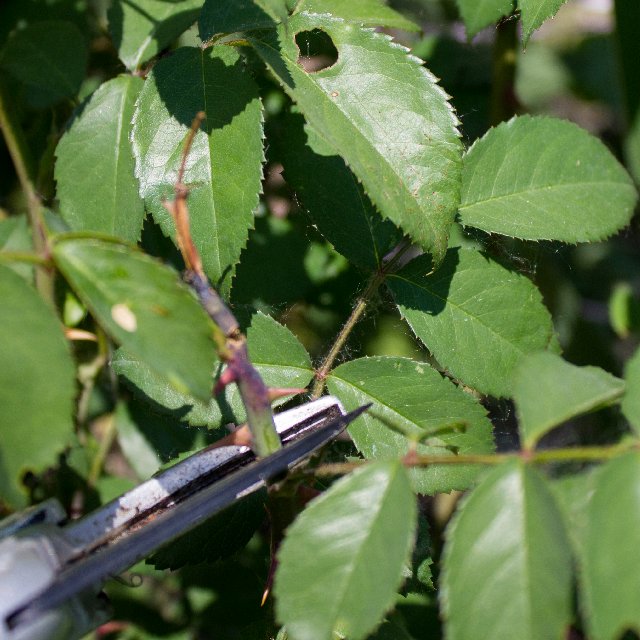
Also, some gardeners recommend spraying a solution of potassium permanganate (potassium permanganate) to prevent bacterial diseases, but it seems to me that it is more suitable for seedlings or herbaceous plants.
If the summer is rainy and cool, then fungicide treatments will take several. And yet: it is desirable to alternate the drugs, so as not to cause the addiction of fungal spores to any one drug.
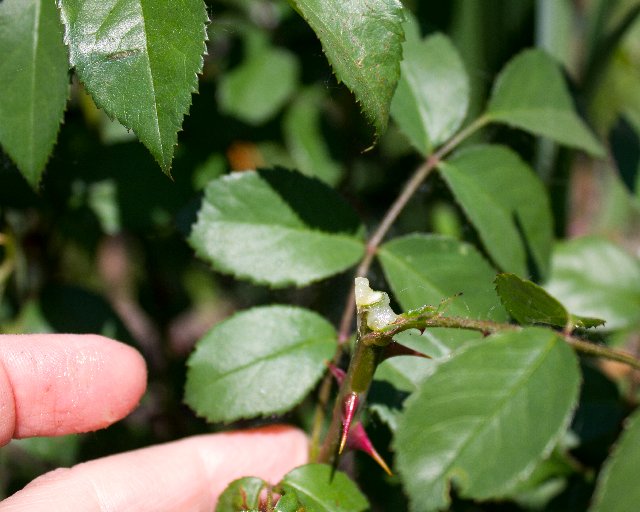
Another reason for the death of the tips of the shoots of roses can be a lack of boron.
With a lack of boron in plants, the apical point of shoot growth is affected or it may even be absent (have you seen cabbage without a core, or seedlings of tomatoes with only cotyledon leaves?).
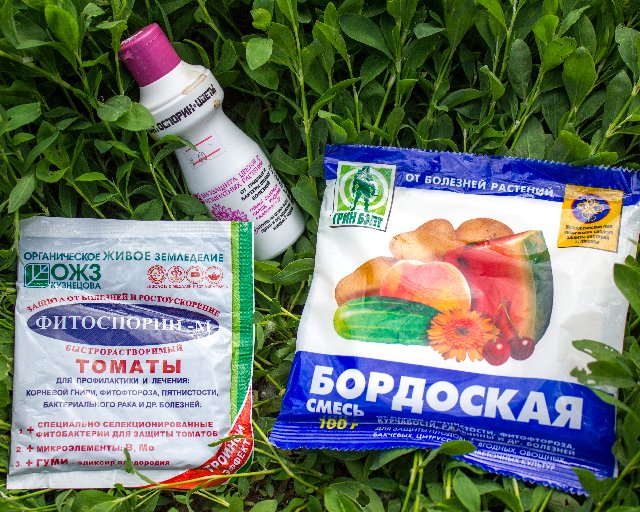
It is the lack of boron that provokes the spread of various bacteriosis. When the apical shoot escapes below the affected zone, the side shoots appear on the shoot, the bush becomes squat and wide.
To fix the situation is easy. It is enough to treat the rose bush with liquid fertilizer with a complex of macro- and microelements. Now there are a lot of such drugs on sale - Ideal, Rainbow, Florist.






